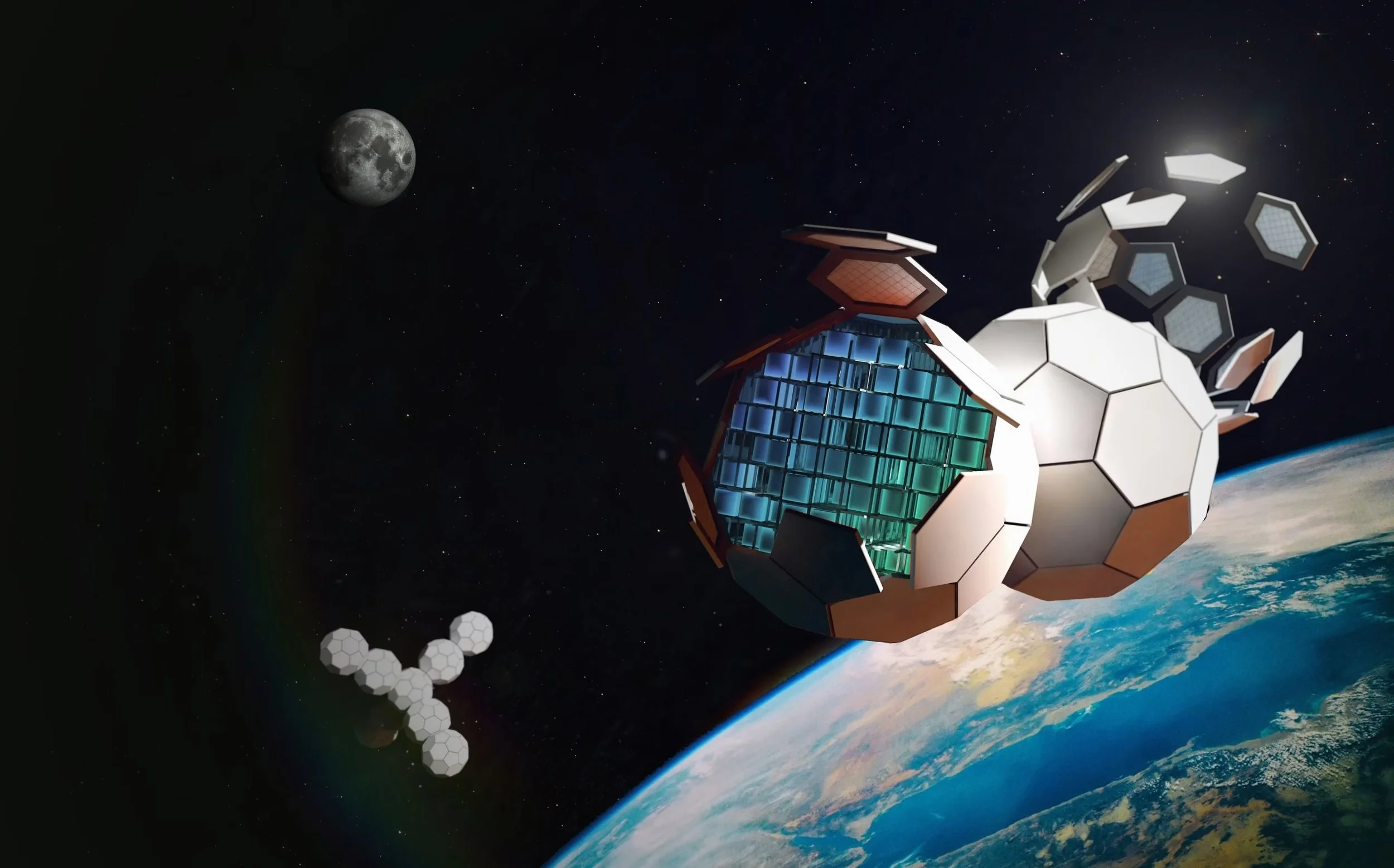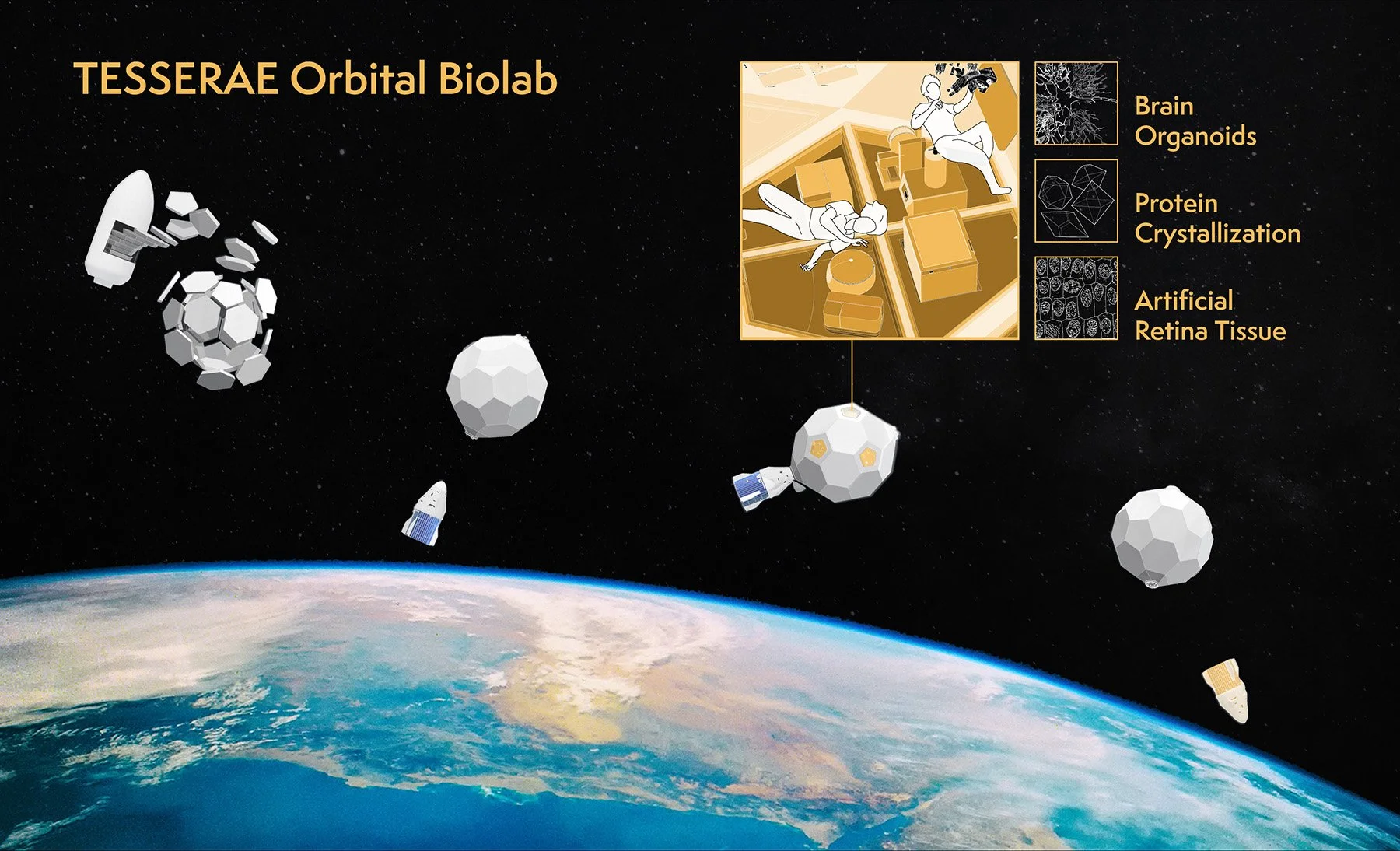Orbital Biolab: A first-of-its-kind biotech research hub in LEO
Aurelia is setting its sights on scaling up therapeutics and biotech manufacturing in microgravity using TESSERAE habitat technology
We all understand the amazing impact of GPS and weather satellites on our day to day lives. Now, space science is poised to yet again revolutionize life on Earth — from new tissue engineering that might cure blindness, to unprecedented testing opportunities for cancer drugs.
For two decades, pharmaceutical companies have utilized the unique microgravity environment on the International Space Station (ISS) to conduct protein research and drug development. With the ISS set to retire around 2030, however, we have a critical loss of orbital science capability and simultaneously a tremendous opportunity before us. What we need now is scale - large volume, high throughput biotech factories in orbit. We need dedicated facilities to dramatically accelerate both fundamental science for cures, and applied therapies that are manufactured in orbit and shipped back to Earth for immediate life-changing procedures.
To this end, Aurelia Institute is excited to announce that we have secured our first seven-figure donation to embark on a new design and engineering challenge: constructing and launching our Orbital Biolab, a TESSERAE habitat custom-built as a research laboratory focused on biologic medicines, protein crystallization for drug development, and tissue engineering for revolutionary new structures like artificial retinas.
Unique possibilities in zero gravity
The microgravity environment of low Earth orbit (LEO) is an underutilized resource for conducting groundbreaking research for human health. Space offers unique conditions for drug development and human tissue production that have the potential to revolutionize pharmaceutical production and regenerative medicine.
For diseases like cancer and Alzheimer’s, researchers often use lab-grown organoids [1] (simplified versions of organs) for testing. Researchers have studied organoids in space because they mature faster in microgravity, allowing scientists to document the effects of aging [2] on an accelerated timeline. Microgravity has been shown to influence tumor cell morphology, gene expression, and metastatic behavior, making space-grown tumor organoids valuable for testing anti-cancer drugs [3]. Space-based research on organoids can provide a unique model for rapidly examining both progression of and therapies for neurodegenerative diseases (Parkinson’s, multiple sclerosis, Alzheimer’s) and cancer [4].
Microgravity enables highly detailed, highly consistent 3D bioprinting and layering methods that can be used to produce a range of tissues for clinical research that are difficult to make on Earth, including artificial retinas. These retinal implants, made in space and brought back to Earth, could cure two key types of blindness, retinitis pigmentosa and perhaps in the future, macular degeneration.
The TESSERAE construction of an orbital biolab enables not only these revolutionary therapies, but also a new paradigm for human use of low Earth orbit for the public good. From biotech factories, to massive space based solar power installations, Aurelia will be leading a new era of space construction and infrastructure — the type of next-generation institution building that can protect the planet and empower Earth’s citizens.
Diagram of a TESSERAE habitat ‘exploded’ to show activity zones separated by systems & storage volumes.
Key Takeaways of our Case Study
Aurelia’s engineering team has published a TESSERAE Orbital Case Study: a preliminary design analysis of a flight-scale version of our self-assembling TESSERAE habitat, fashioned as a biotechnology research station. This research was originally presented at ICES 2024 to a peer-reviewer technical audience of scientists, engineers, and industry professionals who provided expert feedback. This final publication incorporates that input. Since then the team has been building out the design and technology specs to make Orbital Biolab a reality.
In accordance with NASA’s goals for future commercial development of LEO, this version of TESSERAE features three primary mission objectives:
Provide a flexible low Earth orbit research platform focused on the support of revolutionary benchtop science for biomedical research;
Provide a large-volume space capable of scaling up high-throughout production for key therapeutics and microgravity tissue engineering;
Provide a multipurpose, accessible interior capable of hosting users from a variety of terrestrial lab science backgrounds (with no prior flight expertise) as well as career astronaut backgrounds. This vision is unprecedented and a key part of Aurelia’s mission to expand access to space to qualified, trained individuals beyond NASA astronauts.
Diagram of a biolab workspace inside TESSERAE, showing equipment for microgravity research.
Next Steps:
Help us prepare to launch our next technology demonstration mission for the TESSERAE Orbital BioLab! We are convening an unparalleled group of scientists and biotechnologists to lead discovery in orbit.
#1. Building on two missions to the International Space Station, and a third upcoming deployment in 2026, we are now preparing for our first ever free-space demonstration of the TESSERAE shell. This is a critical milestone towards assembling the ultimate Orbital BioLab habitat exo-structure. Thanks to the momentum from our 2025 mainstage TED Talk we are raising a major philanthropic campaign to support this crucial space mission. Get in touch today if you have advice or ideas for donors who should be part of our founding cohort. We’re thrilled to announce we’ve already secured our first seven-figure donation to lead the project!
#2. We are convening a league of extraordinary scientists to provide input on equipment, scoping, and on-orbit science facility needs, and to guide the governance of this space infrastructure for the public good (in the long history of key science committees that govern exquisite resources like the James Webb Space Telescope, or the CERN particle physical collider). If you know someone who should be on our scientific advisory council, or if you might like to join us yourself, write to us at hello@aureliainstitute.org! Aurelia Institute is honored to have the counsel of visionary biotechnology leaders like MIT’s Bob Langer and Cornell Weill’s Chris Mason — help us build out this community to shape the next generation of life-saving space science!
Citations
[1] Kim, Soon-Chan et al. “Effects of simulated microgravity on colorectal cancer organoids growth and drug response.” Scientific reports vol. 14,1 25526. 26 Oct. 2024, doi:10.1038/s41598-024-76737-8
[2] Marotta, Davide et al. “Effects of microgravity on human iPSC-derived neural organoids on the International Space Station.” Stem cells translational medicine vol. 13,12 (2024): 1186-1197. doi:10.1093/stcltm/szae070
[3] Becker, Jeanne L, and Glauco R Souza. “Using space-based investigations to inform cancer research on Earth.” Nature reviews. Cancer vol. 13,5 (2013): 315-27. doi:10.1038/nrc3507
[4] Grimm D, Schulz H, Krüger M, Cortés-Sánchez JL, Egli M, Kraus A, Sahana J, Corydon TJ, Hemmersbach R, Wise PM, et al. The Fight against Cancer by Microgravity: The Multicellular Spheroid as a Metastasis Model. International Journal of Molecular Sciences. 2022; 23(6):3073. doi:10.3390/ijms23063073
Additional key papers documenting the promise of microgravity science for therapeutic cures:
Kim, SC., Kim, M.J., Park, J.W. et al. Effects of simulated microgravity on colorectal cancer organoids growth and drug response. Sci Rep 14, 25526 (2024). https://doi.org/10.1038/s41598-024-76737-8
Lawrence J. DeLucas et al., Protein Crystal Growth in Microgravity. Science 246, 651-654 (1989). DOI:10.1126/science.2510297
Lutz, W.E., Azadmanesh, J., Lovelace, J.J. et al. Perfect Crystals: microgravity capillary counterdiffusion crystallization of human manganese superoxide dismutase for neutron crystallography. npj Microgravity 9, 39 (2023). https://doi.org/10.1038/s41526-023-00288-x
McPherson, A., DeLucas, L. Microgravity protein crystallization. npj Microgravity 1, 15010 (2015). https://doi.org/10.1038/npjmgrav.2015.10
Saglam-Metiner, P., Devamoglu, U., Filiz, Y. et al. Spatio-temporal dynamics enhance cellular diversity, neuronal function and further maturation of human cerebral organoids. Commun Biol 6, 173 (2023). https://doi.org/10.1038/s42003-023-04547-1





